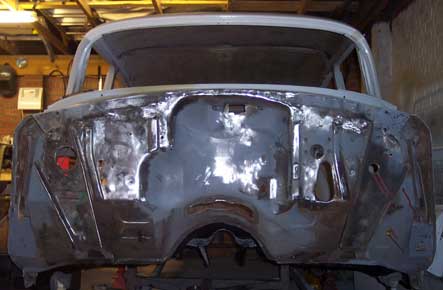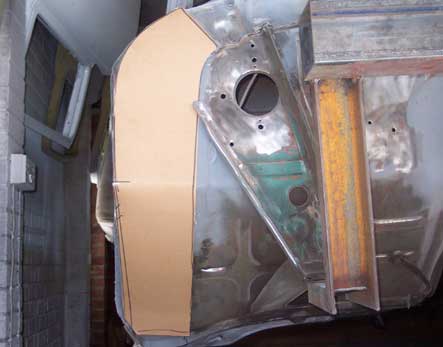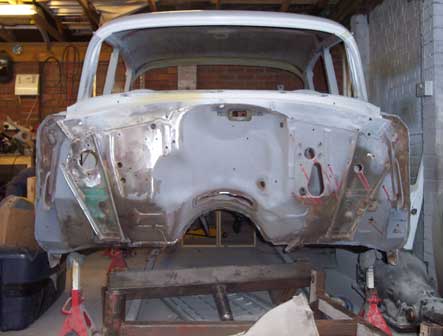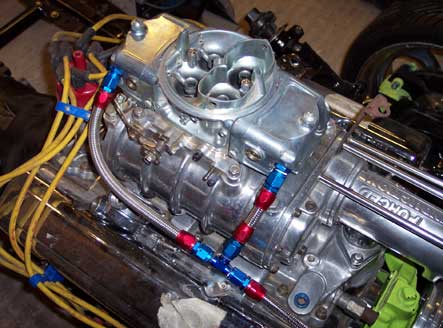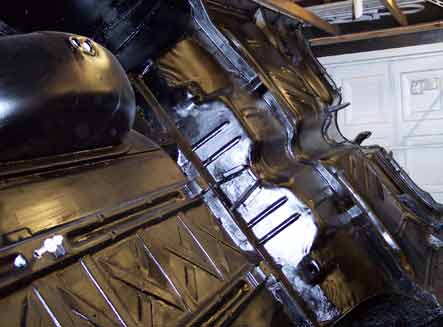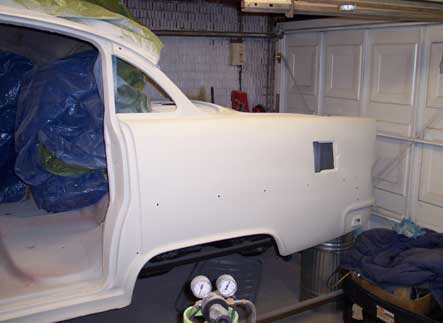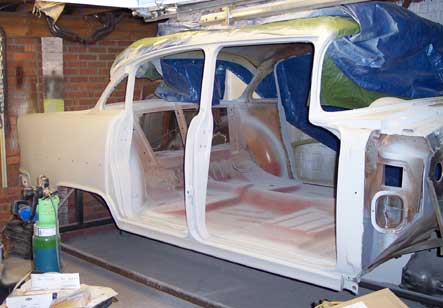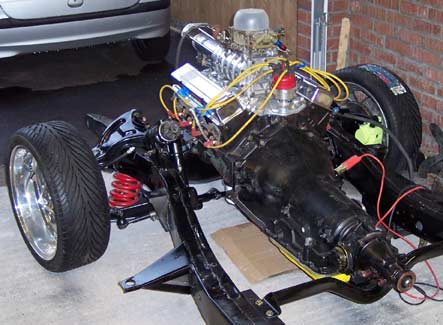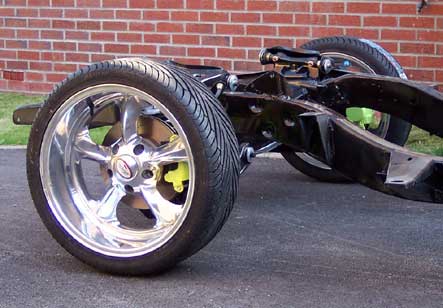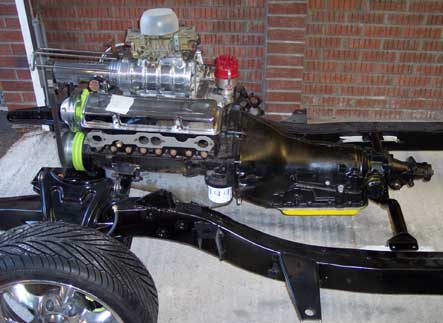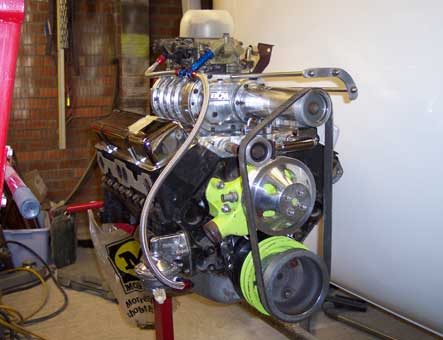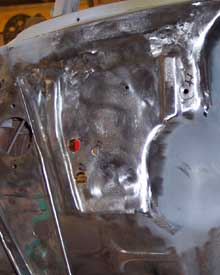
Now that I could get at the firewall I made a start on getting rid of the join along the top edge and a load of the unused holes. I had read that there was tar based sealer between the 3 layers of metal and that it was hard to weld but gave it a go anyway. Before I got the welder out I tried melting it with a small torch, but nothing came out. When I started welding, It spattered and the weld fell off as it melted and burnt the sealer. I worked my way along letting it all burn away and covering me in blobs of weld as I went.

Once I had lumpy weld at intervals all the way across, I went over it with the angle grinder and smoothed it, then filled the joins with weld.With the sealer gone, it welded easily and I filled it all the way along, swapping from side to side to keep the heat down. Another go with the grinder left it all looking good, so I moved on to filling the holes that I dont think will be used. I cut some small patches for the bigger ones and the smaller ones I filled with weld. It looks awful in the pictures, but it needs hammering flat (It was dented before I started) and a very thin skim of filler and it’s done.
